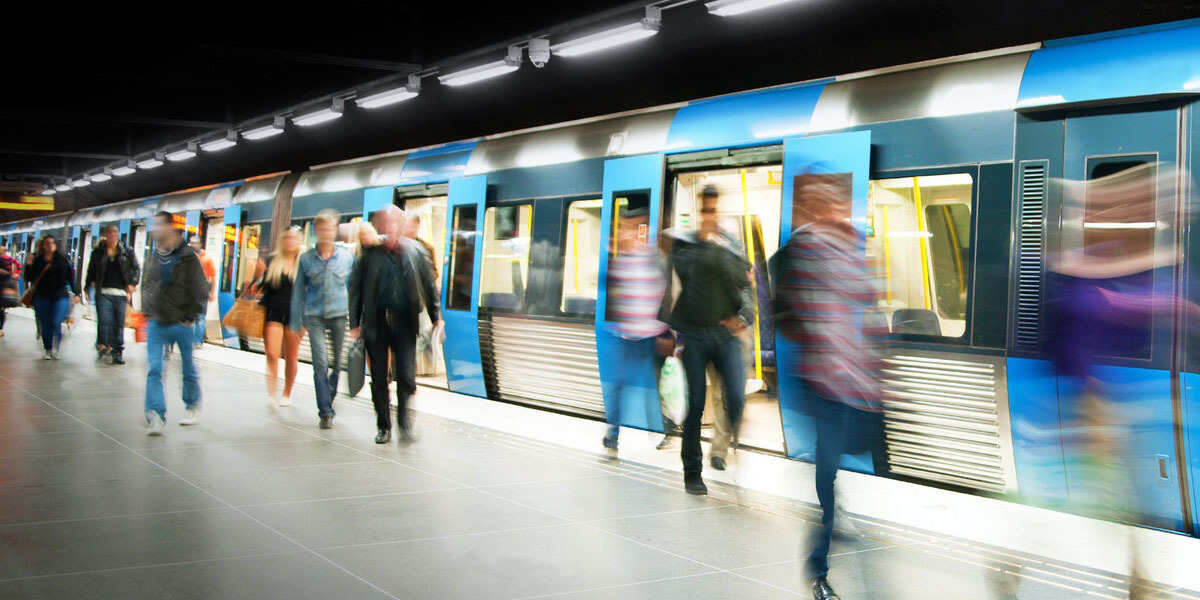Smart cities have become an important movement with a focus on raising the quality of urban life. At the heart of a smart city you will find smart mobility which enables travelers to use multiple ways of travel to make it as easy as possible to get from A to B. I believe that smart mobility will be fueled by data, which I will address in a series of articles that define smart cities, their challenges and opportunities, and the use of smart data management.
How do you define a smart city?
While the smart cities movement has gained considerable momentum, we are still struggling to come up with a simple definition of a smart city. In working with various trade associations and clients, I have come up with my own definition:
“You know that your city is smart when you poke it with a stick, and it reacts appropriately.”
Now I admit that this is a rather flippant definition, but it does have some serious meaning. It would seem to me that a smart city must be able to sense threats and opportunities and react appropriately. This infers that a smart city must possess a wide range of sophisticated sensors. These would measure traffic volume, traffic speeds, and transit service performance among other things. The smart city will know when you poke it with a stick. It will also be necessary for the smart city to possess the intelligence to explore and select the appropriate response. Intelligence will enable the definition and selection of an appropriate reaction, which could include movement, but also other responses such as warnings or alerts.
With respect to smart mobility, the sensors will indicate prevailing transportation conditions within the smart city and measure fluctuations in the demand for transportation. This data will form the basis for planning and operations strategies that align smart city transportation services to the demand for transportation and adapt such services for variations in prevailing conditions. For example, rain or snow storms will have a significant impact on prevailing transportation conditions, slowing vehicles and delaying transit services. An appropriate strategy would be to inform travelers of the new situation and adapt transit services to the new conditions.
What is smart mobility?
There’s a lot of discussion within smart cities circle about the delivery of smart mobility within smart cities. If we define mobility as the ability to move, smart mobility is utilizing different modes of transportation alongside or instead of owning a personal car. Forms of smart mobility include ride-sharing, public transportation, walking, biking, and more.
Within a smart city, accessibility is also another crucial objective. Accessibility measures the ease or difficulty to get from one point of the city to another in terms of travel time, cost and travel time reliability. Accessibility can be measured for different types of trip purpose such as going to a health appointment, taking advantage of an education opportunity or getting to work. These activities all represent critical factors in improving the quality of urban life. Therefore, the overall objectives within a smart city should be to improve mobility and accessibility by delivering enhanced transportation or mobility.
So, what do I mean by enhanced mobility? I mean the careful management of transportation service delivery to ensure that every traveler has the ability to understand the transportation opportunities available at any given time and for the given journey. Transportation services are delivered in the most cost-effective and efficient manner using all modes of transportation at our disposal including private cars, transit and nonmotorized transportation. Transportation services include both public and private sector activities, combined into a single system using appropriate business models.
Enhanced mobility can also be applied to freight through the use of management systems to optimize freight delivery itineraries and vehicle operations. Improvements in mobility and accessibility require a detailed understanding of prevailing transportation conditions and changes in the demand for transportation. Fine-tuning the delivery of transportation services can only be accomplished with the level of insight that can come from big data and analytics.
How can big data and analytics optimize smart city transportation?
One way to look at big data and analytics is the processing of large amounts of data into usable information. From this information, insight and understanding is developed and this leads to the ability to plan ahead and put into action solutions and make better decisions. In essence, it is essential to move as effectively and efficiently as possible from data to information to insight to action.
Teradata specializes in the application of big data and analytics to solve problems. We focus on answers to complex challenges that are delivered by integrating 100% of the data to uncover real-time intelligence at scale. Teradata’s Vantage platform consolidates data, analytic, functional and tool silos into a single platform, allowing customers to see what others cannot see, and operationalize insights to solve problems and deliver transformative business outcomes.
We live in an interesting time in transportation when the volume of data available to us is more than it’s ever been. This presents both challenges and opportunities. On the challenge side, it is important to choose the appropriate tools, otherwise we can be swamped by the volume, variety and complexity of data. On the opportunity side, advances in data science have given us the tools to harness big data in an appropriate manner. Unlike the past, where we had to split up data to manage and process them effectively, we can now take huge data sets and manage them as a single entity. This unified, integrated environment allows us to have an enterprise-wide view of data that was never possible before.
In the next installment, I will explain how smart data management takes advantage of these recent advances in data science and how they can be applied to managing transportation service delivery quality within a smart city.

